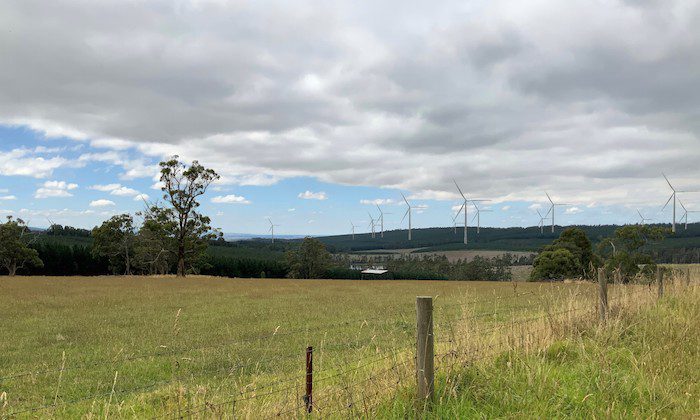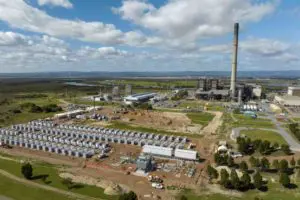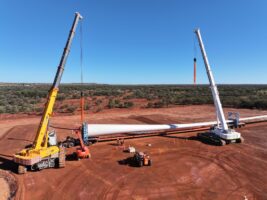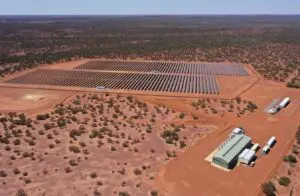US bushfire detection technology is being trialled at the contentious Delburn wind farm for the next four months, as the developer behind the project gears up for construction.
The wind farm is the first to be built within a plantation in Australia had attracted significant public opposition and the potential risk of bushfire is one of the charges laid against it.
Two cameras from bushfire detection company Pano AI were set up a few months ago in the centre of the site area.
These cameras each have a 30km radius on a clear day, although clouds and other environmental factors can reduce this.
An algorithm detects smoke and fire to indicate the possibility of a bushfire, and can ‘see’ a plume of up to 100m in order to capture possible outbreaks in valleys. That data is verified by Pano staff who send a real-time alert to fire fighting brigades, to the wind farm operator and plantation owner HVP Plantations.

First wind farm with Pano AI tech
The pilot is the first adaptation of the technology to a wind farm in Australia and was recommended for the project as part of the fire risk assessment within the planning permit for the wind farm.
Pano AI is talking to both private companies and councils in renewable energy zones in several states, however, about installing cameras in solar, wind and battery locations, says the company’s Australia go-to-market heat Andrew Prolov.
“We’re taking advantage of infrastructure being built as part of the wind farm, which creates a fantastic vantage point,” he told RenewEconomy.
“Any high vantage position is what we’re looking for, whether it is a communications tower or a fire lookout tower, and we have a ruggedised solution that world in low bandwidth locations, such as plantations.”

The company is active in the US, Canada, and Australia.
Plantation owner HVP is already using the technology as part of the Green Triangle which covers south east South Australia and south west Victoria.
It is the largest camera bushfire detection network in the country and uses 14 camera stations to monitor the commercial plantation crops in the area.
Fire tech is a new field
Fire technology for renewables projects is a new field in Australia.
Brisbane-based Delta Fire set up its fire detection and suppression system – a US technology called Firetrace – at the 131 MW Waterloo wind farm, about 100km north of Adelaide. It can detect and then put out fires that start on the wind turbine itself.
Earlier in 2023 the Australian Research Centre (ARC) gave the University of Southern Queensland (UniSQ) $440,000 to build on research around advanced fire retardant composite resins that can be used to make wind turbine blades and materials.
Fires created by wind turbines are very rare, but still happen.
In January 2023, two separate wind farms experienced turbines catching on fire.
One at the 66 MW Cathedral Rocks Wind Farm in Port Augusta where two blade and a nacelle were destroyed on one of the 33 turbines.
The other was at the 30 MW Cullerin Range Wind Farm in the NSW Southern Tablelands where a turbine caught fire.
Takes risk seriously
Delburn wind farm’s Elizabeth Radcliffe says the operator, OSMI Australia, takes the fire risk “very seriously”.
“We know the Delburn Wind Farm is being built in a bushfire prone area. We have designed the Delburn Wind Farm to ensure it does not increase the already high risk of fire in the area,” she says.
“The Pano AI camera technology will provide the community and our host landowner, HVP confidence that any fire that starts in the plantation and surrounding area can be detected quickly and the location shared with emergency responders.”’
Construction on the 33-turbine farm will begin next year, with an estimated commissioning date of 2026.
It’s being built in the Strzelecki Ranges to the south of the Latrobe Valley inGippsland, and the cameras themselves have a vista over the coal fired power stations in the areas – ironically where the Hazelwood fire began in 2014.










